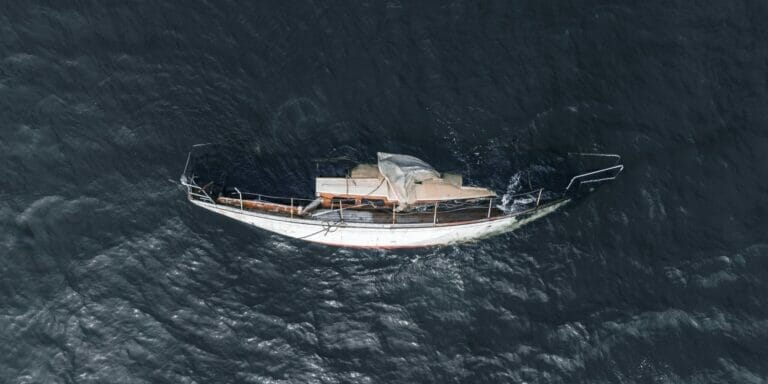When it comes to real bluewater cruising, like ocean crossings or even circumnavigations, sailboats are clearly more common than powerboats. But let’s be honest, many sailors start the engine as soon as there is a calm. On most sailboats, the engine is certainly no longer just an auxiliary propulsion for harbor maneuvers, but rather a frequently used companion while cruising. Some provocative voices therefore also claim that there are only powerboats with and without a mast… The question if it makes sense to choose a powerboat instead of a sailboat for bluewater cruising is absolutely legitimate and far too little discussed. Therefore, we want to deal with this question in the following and look at which powerboats come into question at all and discuss the respective advantages and disadvantages of powerboats and sailboats.
Why Do We Limit Ourselves to Bluewater Cruising?
First of all, we want to explain why we are focusing on bluewater cruising in this post and why we are not examining the question of whether to use a powerboat instead of a sailboat in a broader context. Actually, it’s quite simple, because the requirements a boat has to meet differ dramatically depending on its intended use. For example, if you only want to do coastal cruising, you won’t have to worry as much about having enough fuel on board as if you’re tackling an ocean crossing. Even if you don’t want to cruise at all and are only looking for a boat for weekend trips, the requirements for the boat are completely different and the decision whether powerboating or sailing is better for you will be based on completely different criteria. In such cases the question of powerboating or sailing does not even arise, because both offer fundamentally different features, and a comparison would hardly make any sense.
In bluewater cruising, on the other hand, both the requirements for the boats as well as the characteristics of the boats merge, regardless of whether they are powerboats or sailboats. In this context, the decision may not be so clear-cut, because for many, the actual boating is no longer in the foreground, but the liveaboard lifestyle, where aspects such as safety, comfort and practicality are highly relevant. The question of powerboat or sailboat is therefore particularly interesting in this context, which is why we have focused on it in this post.

Do Bluewater Powerboats Even Exist?
While most production sailboats are seaworthy from about 30 feet up, even significantly larger powerboats are not suitable for offshore cruising, let alone crossing oceans. The main problems for powerboats are their limited range and the strongly prominent roll in heavy swell. That a fuel-dependent vessel faces the challenge of limited range should be obvious, and the problem of the vessel’s roll is mainly due to the fact that a powerboat has neither a keel nor any sails, both of which provide a great deal of stability for sailboats.

Even though most powerboats fail at both of these hurdles, there are some boats specifically designed for or capable of long-distance voyages that overcome both the range and roll issues. Such boats are known as passagemakers. The pioneer in yacht design of this particular type of boat, Robert P. Beebe, defined in his book “Voyaging Under Power” that a true passagemaker must be capable of crossing at least the smallest ocean, the Atlantic. But how exactly are the problems of range and roll that are so prevalent with powerboats solved?
Displacement Hulls and Huge Fuel Tanks
Boats with planing or semi-planing hulls consume considerably more fuel than those with displacement hulls, so only a displacement hull is a viable option for long-distance cruising. As a bluewater cruiser you are also exposed to heavier swell and planing is not to be recommended in rough seas anyway…
In addition, passagemakers are equipped with huge fuel tanks. For example, even the smallest Nordhavn model, the N41 (with a length of about 41 feet), has a fuel tank with a capacity of 3407 liters (300 gallons).

To sum it up, the relatively fuel-efficient displacement hull, coupled with a huge fuel tank capacity, allows for gigantic cruising ranges, and makes it possible for powerboats to cross oceans effortlessly.
Stabilization Systems Reduce Roll
To counteract the issue of a vessel’s roll, various systems have been developed that are very effective at stabilizing powerboats even in heavy swell.
The simplest and most robust anti-roll system consists of structures that are towed from the boat on long outriggers in the water. Stabilizers of this type include so-called paravanes (also known as birds) and flopper stoppers (sometimes rock stoppers). Paravane stabilizers work like an inverted wing, because the water flow against the special construction generates a downward pulling force that stabilizes the boat. This stabilizing force increases as the boat makes more speed. Consequently, this stabilization system works only when the boat is underway, because at anchor the paravanes are not exposed to the water flow and there is no counterforce to the rolling motion of the boat.
Flopper stoppers, on the other hand, pull drag panels up and down that are designed to sink quickly but to be very difficult to pull back up, which ensures that the rolling motion is countered and efficiently reduced. Unlike paravanes, flopper stoppers work great at anchor and are also easier to use. However, they hardly work when the boat is underway, because the stabilizing force is very low compared to paravanes. In the following image you can see an exemplary construction of a flopper stopper made by Tedd White from Channel Islands Marine.
Advantages of paravanes and flopper stoppers stabilizers are that they do not require any electronics or hydraulics, are easy and inexpensive to install, and are also very robust and immune to faults due to their simple design. Because of these characteristics, they are is often carried on bluewater trips as a redundant system in addition to another, technically more complex stabilizer system. We will discuss these more technically complex anti-roll systems in the following.

As an alternative to paravanes and flopper stoppers, there are active fins that also effectively reduce roll. With this type of roll stabilizer, hydraulically moved fins are installed on the hull, and are electronically controlled so that they develop an opposing force to the roll. In the past, active fins could only stabilize the boat while underway, because only then is there any flow to the fins and they can develop an opposing force. Today, however, there are modern systems known as “zero-speed” fins that stabilize the boat even when at rest. In the post below you can see what installed active fins look like (in this case from the manufacturer Humphree).
Another anti-roll system is a gyro stabilizer, which consists of a completely internal, computer-controlled gyroscope that develops powerful torque to counteract the roll motions. However, gyro stabilizers consume a lot of energy and in case of retrofitting it is not always easy to find a place for the system inside the boat.
In summary, we can see that nowadays there are several modern anti-roll stabilization systems that effectively stabilize even powerboats, making bluewater cruising possible.
The Comparison: Powerboat vs. Sailboat
Now that we have outlined which powerboats are suitable for bluewater cruising and how they overcome the challenges of limited range and roll, we want to look at the actual question of whether to go for a powerboat or a sailboat. We will compare both boat types under different aspects and look at the respective advantages and disadvantages.
Space
Space on board is an important criterion, especially for crews on long voyages, and here we have a clear winner: the powerboat. The fact that no rigging and no sails are needed means that there is significantly more space available both on deck and in the interior.
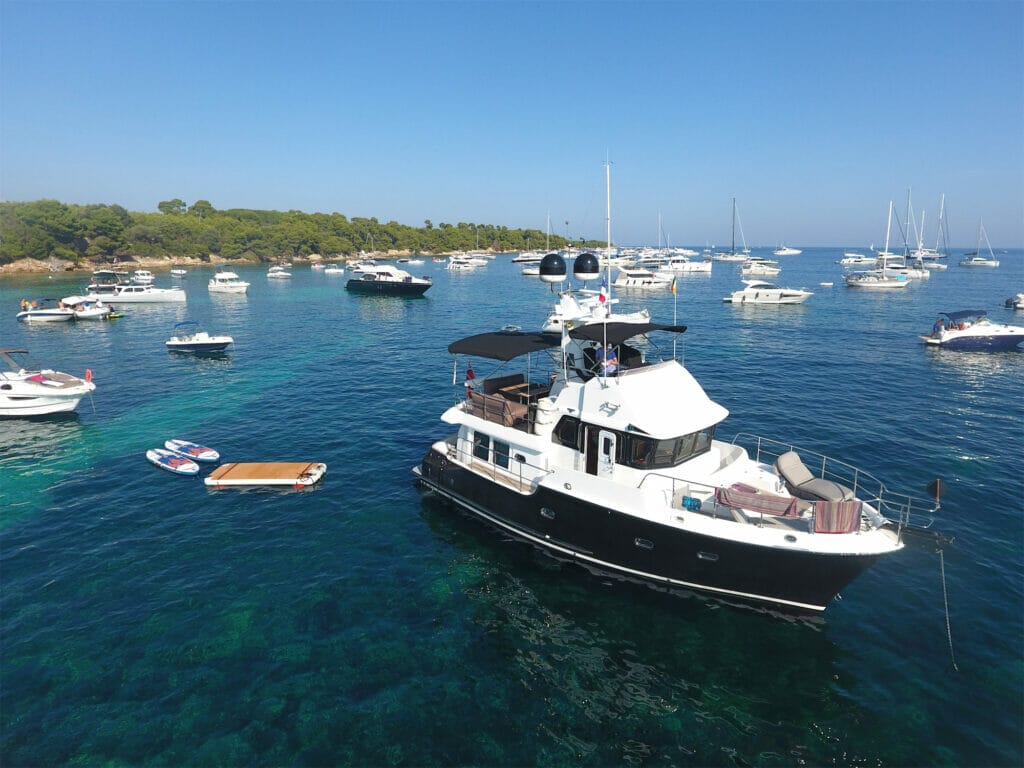
Protection From the Elements
When it comes to protection from the elements, the powerboat is clearly superior to the sailboat. The main advantage is that the boat can be steered from the protected inside of the boat, allowing it to comfortably cover distance even in uncomfortable weather. Whether it’s freezing sub-zero temperatures in remote Patagonia or extreme heat and UV radiation in the Caribbean, a powerboat offers protection for the crew and allows you to cruise in comfort. While some sailboats also have protected helms, managing the sails (hoisting, trimming, and hauling) usually requires the crew to expose themselves to the elements and to go out on the unprotected deck.

The Vessel’s Roll
The roll that occurs on boats in heavier swell becomes a serious challenge, especially on longer (bluewater) voyages, not so much for the boat, but primarily for the crew. We have already explained above that this roll is particularly prominent with powerboats due to their design. Sailboats, on the other hand, are effectively stabilized by their keel and sails and are consequently superior to powerboats in this respect. Nevertheless, this inferiority can nowadays be counteracted with modern anti-roll stabilization systems, as we also explained above. Thus, it is a close race between powerboat and sailboat, but since sailboats do not need any further stabilization systems because of their inherent stabilization that comes with their construction, we see the sailboat as the winner here.

Safety
While even smaller production sailboats around 30 feet are safe enough to cross entire oceans thanks to their design, the smallest powerboats capable of doing so are at least 40 feet long. But why are sailboats already safer than comparable powerboats by virtue of their design? The main reason is the keel of sailboats. This considerably reduces the risk of capsizing, and even in the unlikely event of a capsize, it reliably rights the boat. Powerboats, on the other hand, are more likely to capsize and usually do not right themselves due to the lack of a keel and the comparatively high center of gravity. However, there are exceptions, like for example the vessels by Elling Yachts, which can capsize like a sea rescue cruiser. The described advantages of the keel in sailboats are of course only valid for monohulls because catamarans, like powerboats, usually have no keel and can also capsize (very unlikely) and do not right themselves.
As already described when discussing the problem of roll, powerboats are dependent on an anti-roll stabilization system, whereas sailboats do not need one. However, this dependence of powerboats on an additional stabilization system is also safety relevant. After all, these systems can fail, which could be a disaster during a bluewater crossing. Although there is no immediate danger to the boat if the stabilization system is lost, there is a risk to the crew, who may become incapacitated within a very short time, resulting in an immediate danger.
There may also be the safety concern of engine failure in powerboats, but we consider this concern to be largely unfounded. For one thing, most passagemakers are either equipped with an emergency engine, or even have two main engines anyway. Furthermore, the risk of low-quality fuel can be virtually eliminated by multiple independent tanks, advanced filtration systems and other precautions. Modern propulsion systems, when properly maintained and operated, are enormously robust, and the likelihood of complete failure is less than that of mast failure on a sailboat.

One safety advantage of powerboats that is definitely worth mentioning is that they can usually be moved out of danger zones, as in the event of an impending hurricane, more quickly than sailboats. However, in most cases such dangers can be avoided in advance by attentive preparation (e.g., weather planning), so we do not rate this point too highly.
Also, we have already explained that powerboats can be steered from the inside helm at any time, protected from the elements, whereas this is not so easy with sailboats. Sail management requires the crew to go on deck more often and at the same time expose themselves to the risk of going overboard. In this respect, the powerboat provides more safety. But if you properly secure yourself on deck, for example with a lifeline, then you can greatly reduce the increased risk involved in sail management.
In summary, we see that sailboats are generally safer than powerboats inherently due to their design. Nevertheless, the safety risks associated with powerboats can be largely eliminated if properly designed, maintained, and handled, and are then in no way inferior to sailboats. At the end of the day, safety is not primarily dependent on the boat, but on the crew and how they handle the boat.
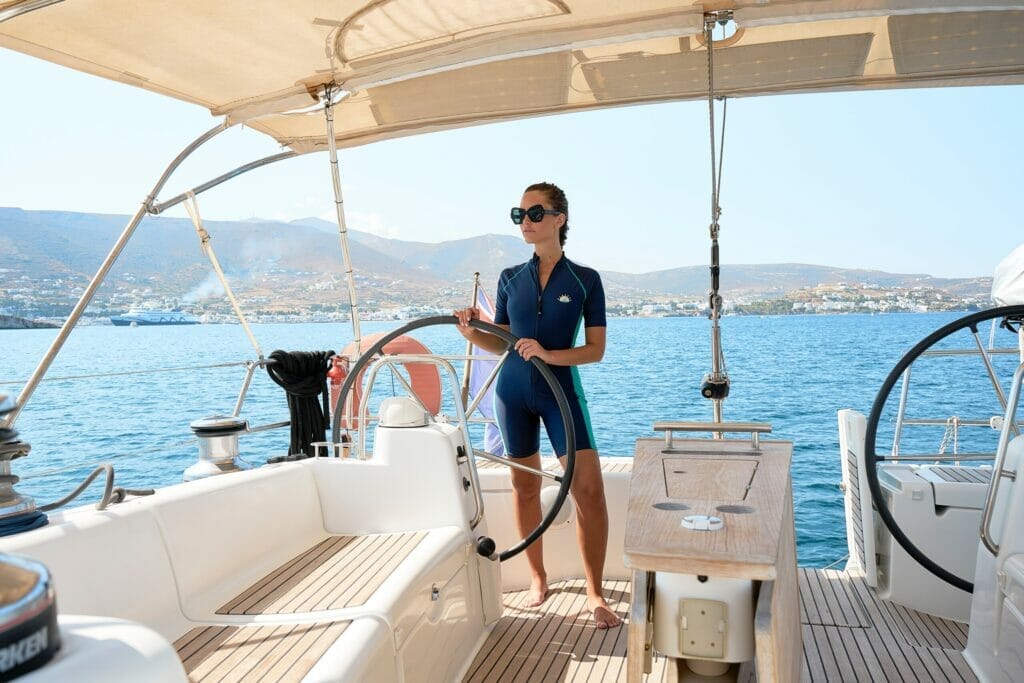
Complexity of Operation
It should be obvious that the operation of a powerboat is considerably less complex than that of a sailboat since there is no need for the time-consuming and exhausting sail management. With the help of an autopilot, the crew of a powerboat only must keep a lookout and the boat does the rest on its own. Sailing, on the other hand, demands a lot from the crew, for example the sails must always be adjusted to changing wind conditions and additional factors must be taken into account when planning your course. These additional tasks around sail management and planning make the successful operation of a sailboat more complex, and many of these tasks can not be done by a technical assistant, but rely on the skills of the crew.

Thanks to the low complexity of operation of a powerboat, they are particularly suitable for older people who are physically unable to perform the more complex sail management. But also, for people who like to go cruising alone, a powerboat is great, because most of them can be operated by only one person without any restrictions. The winner in terms of complexity of operation is clearly the powerboat.
Noise Level
An aspect that significantly influences the comfort on board is the noise level. In this respect, the sailboat has the edge, because sailing logically eliminates the engine noise that is always present in a powerboat. Although at cruising speeds and thanks to advanced soundproofing, the noise level of modern diesel engines is relatively low, a powerboat does not come close to the quietness of a sailboat. While rigging and sails can also cause annoying noises, with proper handling these can be minimized and are anything but dramatic.
Accessibility of Shallow Waters
One point regarding amenities is that of accessibility to shallow waters. The shallower the draft of the vessel the shallower waters can be reached and in practice even small differences in draft can open up great opportunities for the crew. Examples include shallow beaches or anchor bays, but also certain berths in a marina when the water level is low.
Since powerboats do not have a deep keel, unlike sailboats, they generally have a shallower draft. However, this is only true with regard to monohulls, because sailing catamarans also have a shallower draft, which is comparable to that of a powerboat. In summary, however, we still see powerboats as the winners in terms of accessibility to shallow waters.
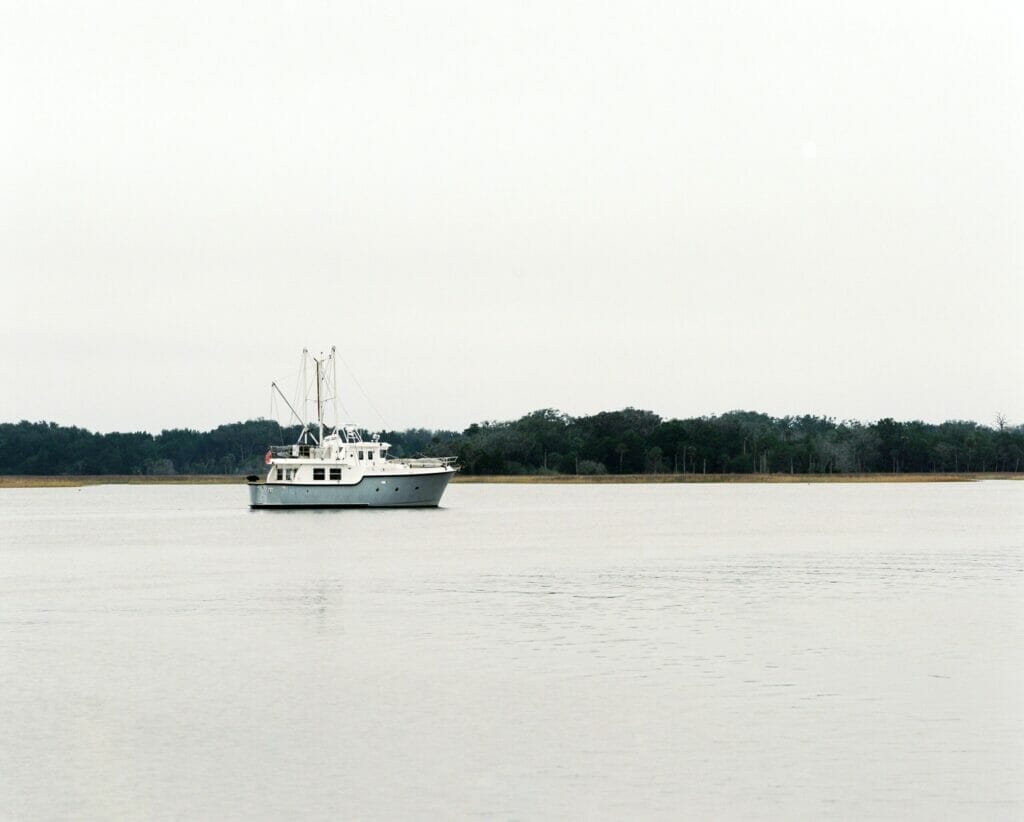
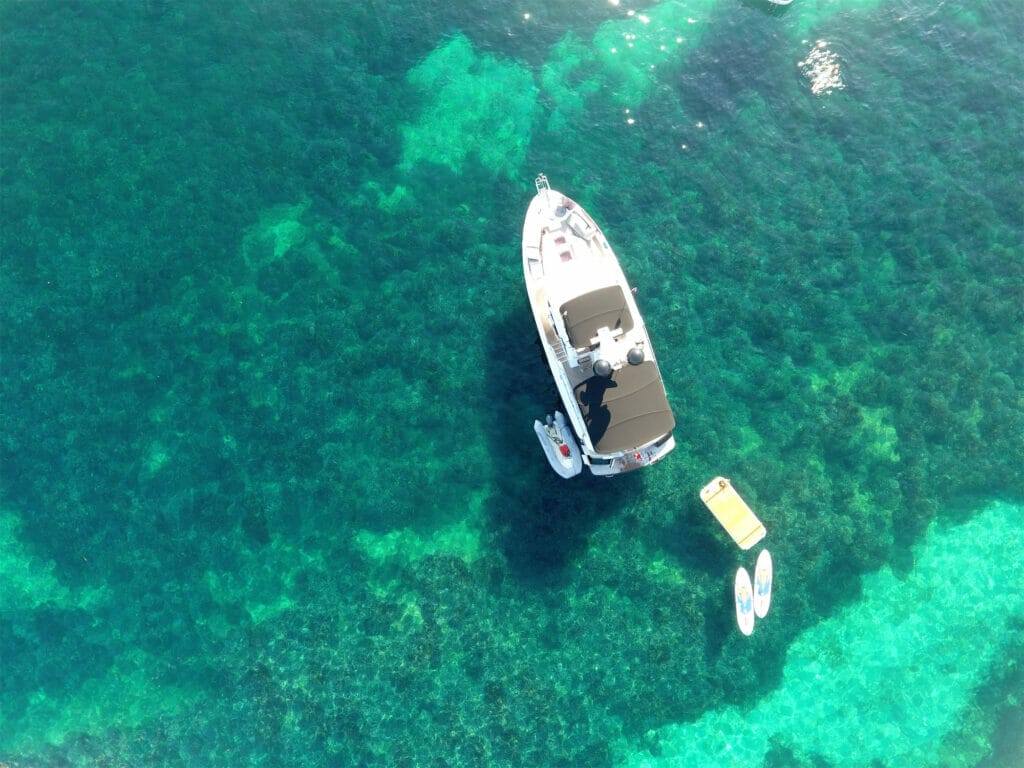
Resource Dependency
Clearly, both powerboat and sailboat depend on external resources to move forward. The two resources, diesel and wind, differ primarily in that wind is an infinite, everywhere available, free resource and diesel, on the other hand, must be acquired. This dependence on a to-be-acquired resource exposes powerboaters to certain constraints when planning voyages. For example, the tank capacity on board limits the maximum length of non-stop passages, and areas where fuel supply cannot be assured may not be accessible. A sailor, on the other hand, is not restricted in this respect when planning a trip.
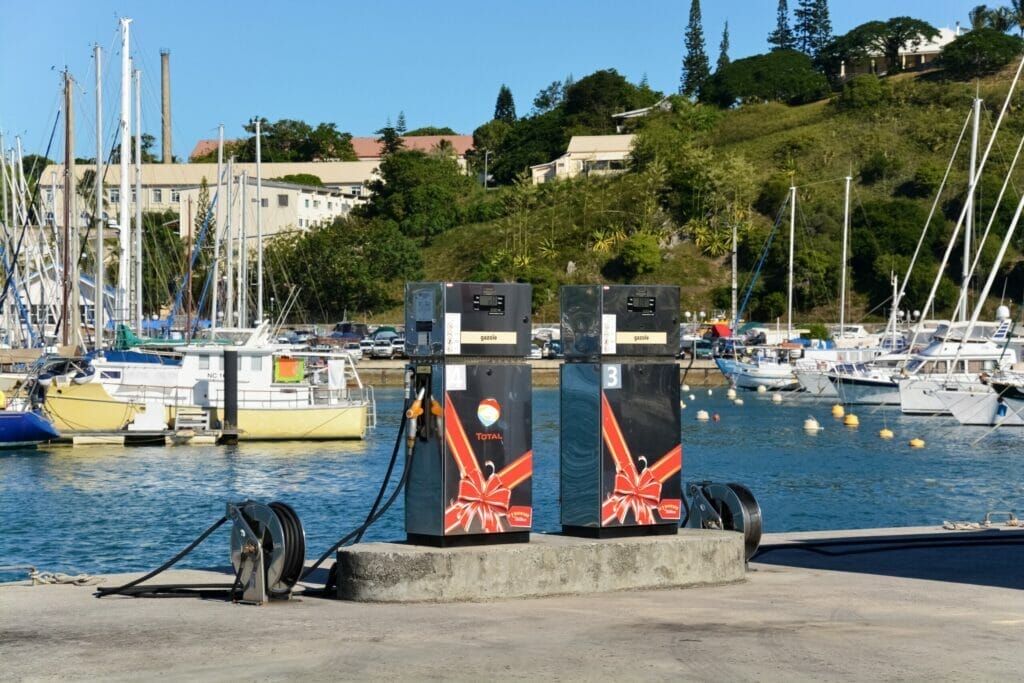
But the tide turns when we look at the measure of predictability. While diesel consumption and refueling locations can be planned relatively precisely, wind cannot be controlled and as a sailor you have to accept whatever the weather brings. This uncertainty makes sailing less predictable than powerboating in terms of time and place. For many leisurely cruisers, this may not be much of a problem, but for people who must meet scheduled commitments, this aspect is very important.

But one point that ties into the plannability is that diesel must be purchased, so as a powerboater you are subject to unpredictable price and quality fluctuations. Especially for crews with tight budgets, sudden price increases of diesel, as happened in early 2022 due to the Ukraine crisis, are a challenge. The wind, on the other hand, does not cause any nasty financial surprises…
To summarize, both powerboat and sailboat offer different advantages and disadvantages due to their different resource dependencies. Depending on your individual needs, one aspect may outweigh the other and therefore we judge this point as a draw.
Sustainability
The aspect of sustainability should be obvious; of course, the sailboat wins in this regard. In contrast to powerboats, no or significantly lower harmful emissions are discharged, which makes sailing more environmentally friendly. At least this is true in terms of conventional propulsion (diesel powered), as there is already a lot of research being done on alternative, more eco-friendly propulsion options. We are therefore already excited about what the future will bring, but until then, sailboats are far ahead of powerboats when it comes to sustainability.
Electric propulsion in particular is a big topic in alternative, more environmentally friendly propulsion concepts. In the picture above, you can see the 40-foot model from Greenline Yachts, a company that focuses on hybrid and e-powered vessels.
Costs
A very important aspect for many is that of cost. Let’s first take a look at the respective one-time acquisition costs for powerboats and sailboats. In general, we can observe that the entry price for powerboats that are suitable for bluewater cruising, i.e., passagemakers, is significantly higher than for comparable sailboats. The supply of passagemakers is simply much smaller than that of sailboats and this, naturally, results in high prices.
In addition, the technical features required for passagemakers add up to high production costs. The best thing to do is to look around on popular sales platforms, because then you will also quickly see that you need considerably more budget for a passagemaker than for a comparable sailboat. While the starting prices of bluewater powerboats are higher, you have to keep in mind that many of them come standard with a variety of technical features that are often only offered as options on many sailboats.
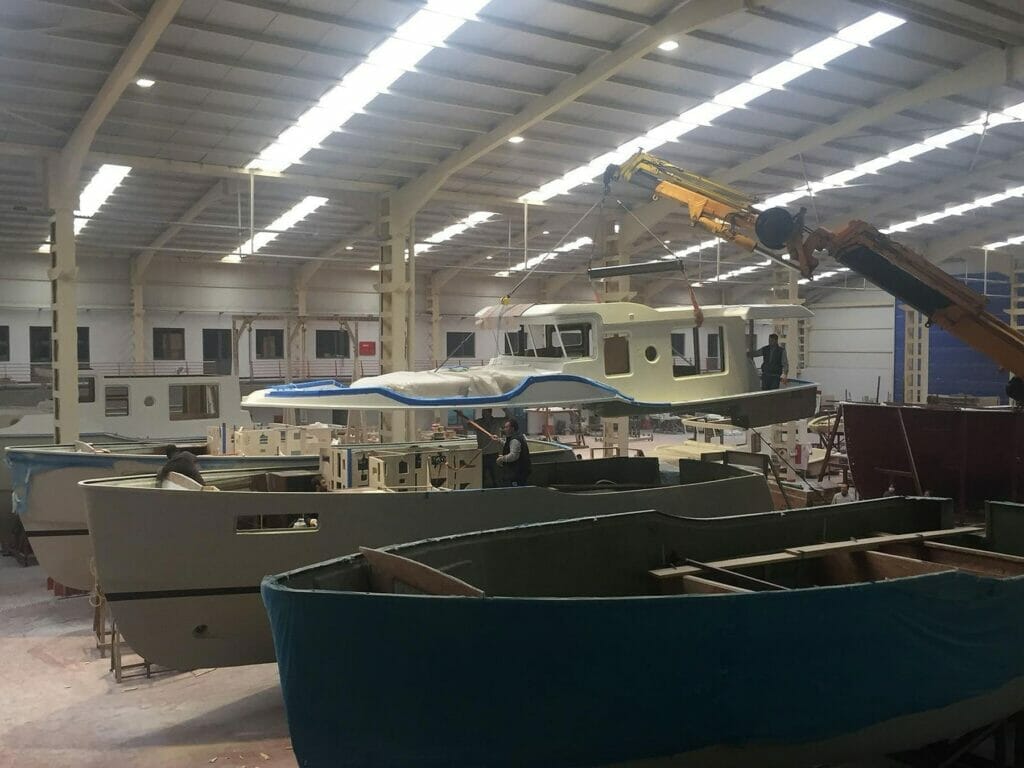
Comparing the running costs turns out to be a bit more complicated. Intuitively, many of you would probably assume that the running costs of a powerboat are also higher than those of a sailboat. After all, the powerboat is dependent on the purchase of expensive fuel, while the sailboat is mainly powered by the freely available wind. However, many forget that the sails and rigging require regular, quite costly maintenance, which of course does not occur with the powerboat. Therefore, the question arises to what extent the less frequent but very expensive maintenance work on the sailboat outweighs the regular costs for fuel on the powerboat.
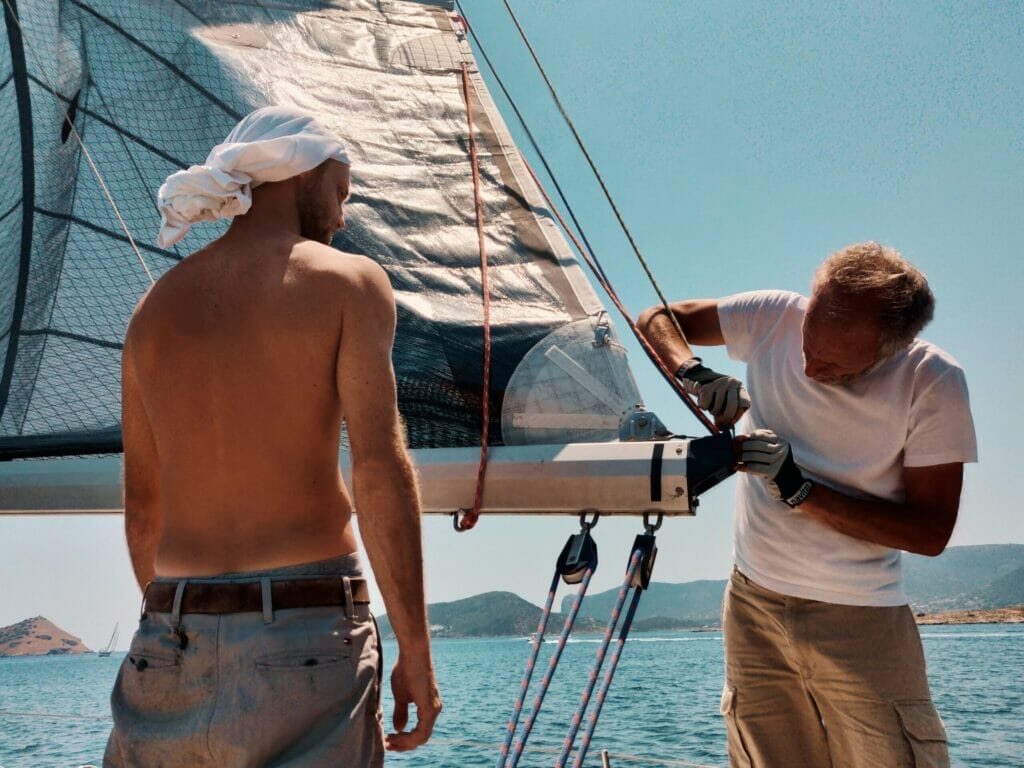
This is a very difficult question to answer in general because this type of cost consideration depends on several variables that vary from boat to boat. Practical experience also turns out to be very inconsistent, and there is no meaningful data collection on this in the literature.
However, some cruisers share their personal experiences regarding cost differences between powerboats and sailboats. For example, in a comparison between the Beowulf (approximately 77 feet) and FPB 83 Wind Horse (approximately 83 feet), long-distance cruising pioneer Steve Dashew concluded that the cost of the powerboat was less than that of the sailboat. Steve Dashew also describes that from 50 to 55 feet in length, the cost of a sailboat often exceeds that of a powerboat because maintenance costs for sailboats increase exponentially with their length.
For smaller boats, on the other hand, the costs of sails and rigging are not yet as significantly high, and full-time cruisers in particular might find it cheaper to sail a sailboat than a powerboat.
If, on the other hand, the boat is only rarely operated, then powerboats are at an advantage, because certain costs, for example fuel costs, only occur when the boat is actually used, while the running rigging and the sails, for example, wear out over time, no matter whether the boat is used or not.
We have already mentioned the aspect of price uncertainty of diesel in the context of resource dependency, and this is of course also very relevant in terms of costs. Crises such as the Ukraine war in 2022 can cause diesel prices to rise very quickly and unexpectedly, making sailboats potentially the more financially lucrative form of propulsion at such times. It can also be assumed that diesel prices will rise rather than fall in the long term, due, for example, to increasingly higher taxes and other charges, not least because of environmental considerations. For many people it is already clear that the days of fossil fuels are numbered – it is only a question of time.
What we want to make clear is that these uncertainties regarding future price developments of diesel also cause costs, not directly quantifiable costs, but indirect costs that you should take into account when cruising. We refer to these costs as “costs of uncertainty“.

At the end of the day, the question of cost varies from case to case depending on your budget, boat requirements and planned cruising destinations. There is no generally valid recommendation and therefore you should calculate the costs of all available options carefully. We will be happy to help you with this, just let us know in the comments below.
Emotions
The last aspect we want to mention is that of emotions, which should not be underestimated. Cruising on powerboats feels different from cruising on sailboats. Sailing is often described as particularly decelerating and close to nature, and at the end of an exhausting day of sailing many feel a special sense of satisfaction. Of course, you can feel similar things as a powerboater, but most agree that powerboating gives a different feeling. However, we would like to emphasize that this different feeling is by no means worse, but simply different. It all depends on your personal preferences! Some people find continuous motoring boring and prefer the active sail management on a sailboat, while others enjoy doing practically nothing while motoring and prefer to devote themselves to other activities.
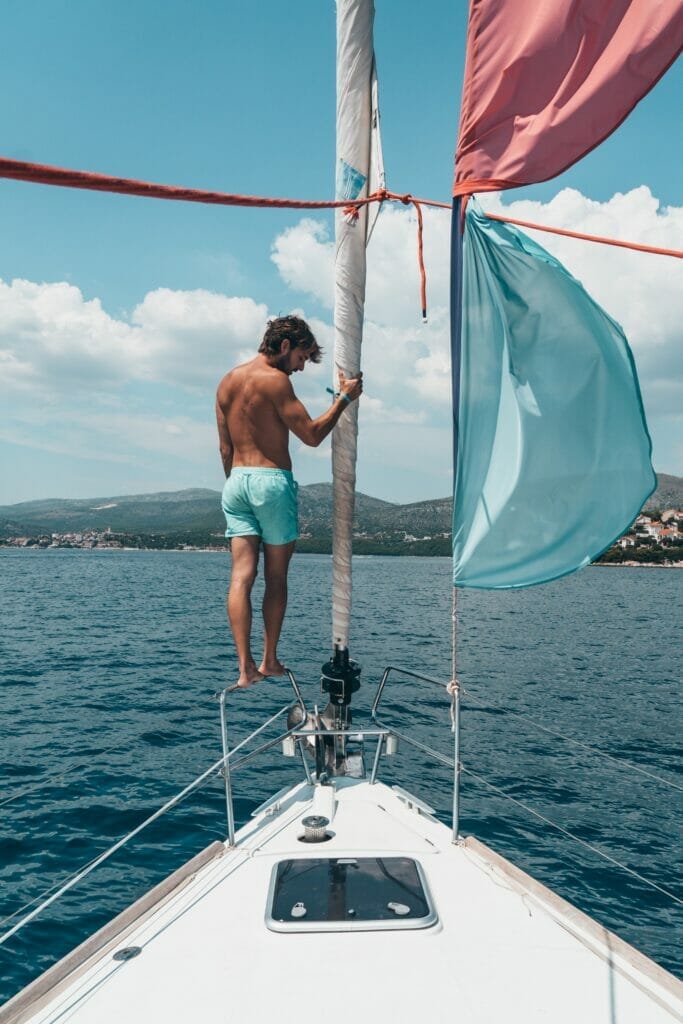
It should be clear that the emotional aspect is very individual and highly subjective and therefore we cannot evaluate it conclusively. Rather, we want to encourage you to listen to your gut feeling and make sure that you are also emotionally comfortable with your boat, especially when long-term cruising.
How Do You Decide?
We hope that we could help all those interested in bluewater cruising with this post to decide whether to choose a powerboat or a sailboat. Our detailed comparison should have shown well that there is no clear, universally valid answer to this question, as is often the case. It all depends on your personal preferences and restrictions, but with the help of the information we have provided, you should have a good guide for your decision.
What do you think about bluewater cruising with a powerboat? Is it something you could imagine, or would you prefer a sailboat? Feel free to leave a comment, we are looking forward to your experiences, questions, criticism, or anything else!









